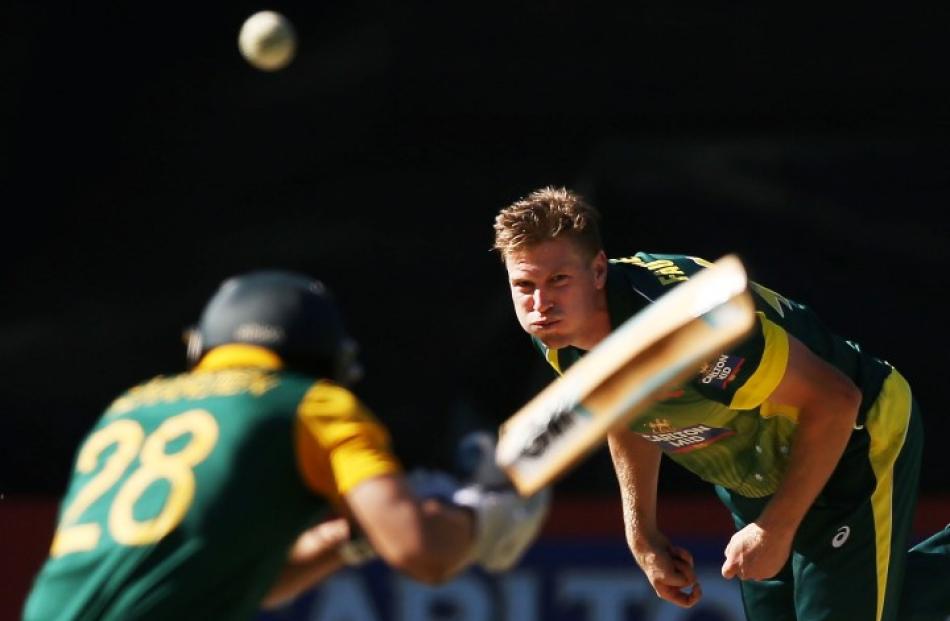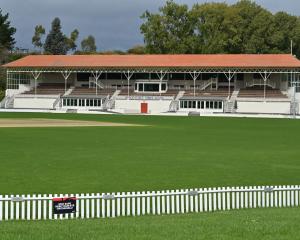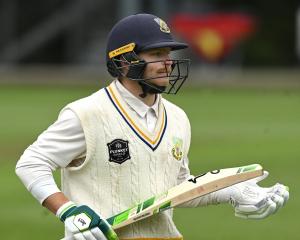There was something awfully visceral about watching the footage of the luckless Phillip Hughes being felled by a bouncer at the Sydney Cricket Ground. The news yesterday that he had died of his injuries produced a physical hurt among lovers of this magnificent game.
Hughes' death rocked a nation, for sure, but it transcended borders, cultures and sporting codes.
In Sharjah, the bereft players of New Zealand and Pakistan were not sure what to do, who to talk to or how to cope -- they found no chapter in the coaching manual for this type of situation -- so they did the right thing and paused.
It's precisely what cricket authorities need to do now as well.
There are already cries for the the bouncer to be outlawed and, on the face of it, the arguments are compelling. Outside the martial sports, how many codes actively encourage the attacking of the head?
Viewed through a certain prism, it is hypocritical to pressure the likes of the rugby, league and American football into making the head sacrosanct and punishing those who transgress, yet glorify the intimidatory fast bowler who has batsmen ducking and weaving. You can look at baseball, too, and their policy of ejecting pitchers immediately from the game if they are deemed to have deliberately aimed at the batter's head and wonder why cricket doesn't adopt a similar approach.
But one of the reasons the Hughes' tragedy has hit home so hard is its rarity. It was described by one commentator as a one in 10 million occurrence. I would suggest those odds are too skinny. At the elite level, in the helmet age, this is unprecedented.
Banning the bouncer aimed at the head could actually be counterproductive and more dangerous. If lawmakers draw the line, say, at the batsman's shoulders, this would give those on strike a greater level of comfort only if cricket had no variables. As anybody who has played the game will tell you, it is hard to think of a sport with more variables.
If the bowler drops it just a little bit shorter than he intended, a delivery intended for the shoulders instead hurtles towards the head and neck. If the bowler hits a patch of the wicket that is just slightly harder, or hits the upslope of a barely discernible divot, the same applies.
The cross-seam delivery, which has become increasingly popular as bowlers strive for variation to flummox the best batsmen in the world, can either slide through or spit up depending on whether it catches the strings of the seam or the leather.
As former England captain and top-order batsman Michael Vaughan recently wrote: "The bouncer is such an important part of the game. It is a test of mental toughness. It is designed to put the batsman off his game, upset his foot movement and get his head in the wrong position, which is what batting is all about. I hope that does not change."
Cricket is a two-footed game. The very essence of good batsmanship is the ability to score and defend off the front and back feet. Banning the bouncer would produce a generation of kids who live on the front foot and have few tools to combat rogue deliveries like those mentioned above. That is dangerous.
To these eyes, better helmet design and better coaching on how to combat the short ball are a more logical response to the tragedy. As is the end of stupid, threatening sledging (umpires need to be more empowered to remove from the field bowlers and fielders who make violent threats).
It's a debate that will resonate and continue over the coming days and weeks but it's too soon, just like the tragic passing of Hughes at 25, to make snap judgements.
Dylan Cleaver













